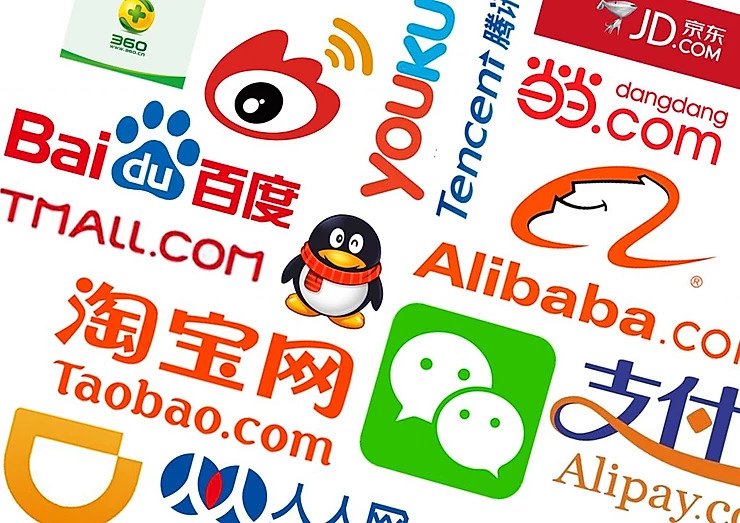Introduction: Why Branding in China Requires a Unique Strategy
China’s digital landscape is unlike any other. With its own social media ecosystem, highly engaged consumers, and strict digital regulations, brands cannot simply replicate their Western branding strategies and expect success.
From celebrity and influencer marketing to PR publishing, local SEO, and strategic partnerships, branding in China requires a localized, multi-channel approach that builds trust, visibility, and engagement.
This guide explores the key strategies global brands must use to establish a strong brand presence in China and ensure long-term success.

1️⃣ Celebrity & Influencer Marketing: China’s Most Powerful Branding Tool
Unlike Western markets where influencers primarily promote brand awareness, in China, KOLs (Key Opinion Leaders) and KOCs (Key Opinion Consumers) are direct sales drivers.
🔹 The Role of Influencers in Branding
✔ KOLs (Macro Influencers & Celebrities) – Boost mass awareness, credibility, and status.
✔ KOCs (Micro & Grassroots Influencers) – Drive authentic engagement, trusted peer recommendations.
✔ Livestream Hosts – Convert audiences directly through product demos & real-time interactions.
🔹 Key Platforms for Influencer Branding in China
🔴 Xiaohongshu (Rednote) – Best for lifestyle, fashion, beauty, and travel brands targeting female consumers.
📺 Douyin (TikTok China) – Short-video & livestream sales, ideal for younger audiences.
🛍 WeChat & WeChat Channels – Best for community engagement & private traffic conversion.
📷 Weibo – Effective for celebrity endorsements & viral campaigns.
💬 Bilibili – Great for long-form content, product storytelling, and youth culture branding.
📌 Brand Strategy:
- Work with a mix of KOLs and KOCs to establish credibility and scale reach.
- Invest in livestream campaigns for real-time engagement & high sales conversion.
- Use brand seeding (sending products to influencers for organic content creation) to gain trust.
2️⃣ PR & Media Publishing: Establishing Authority & Reputation
Public Relations (PR) plays a major role in brand credibility and positioning in China. in China, consistent media coverage strengthens a brand’s reputation and consumer trust.
🔹 Key PR Strategies for China Branding
📢 Press Releases on Chinese Media Outlets
✔ Publish in top-tier Chinese business & lifestyle publications (e.g., Xinhua News, People’s Daily, Sina Finance, 36Kr, Jiemian).
✔ Get featured on industry-specific media platforms (fashion, luxury, tech, real estate).
📰 Baidu News & Baidu Baike (China’s Wikipedia)
✔ Publishing official brand articles on Baidu News improves search visibility & trust.
✔ Baidu Baike (China’s Wikipedia) increases brand legitimacy.
📌 Brand Strategy:
- Secure media coverage before launching in China to establish legitimacy.
- Build an official brand profile on Baidu Baike & news portals to control brand narrative.
- Use Chinese media partnerships to boost brand awareness & credibility.
3️⃣ Local SEO & Baidu Search Optimization
China’s digital search landscape is still influenced by Baidu, not Google. To succeed in China, brands must focus on Baidu SEO and localized search strategies.
🔹 Key Steps for Baidu SEO
🔍 Create a Chinese Website (ICP Licensed) – Hosting on .cn domains or within China improves search ranking.
🔍 Baidu Keyword Optimization – Optimize content with long-tail, high-intent search phrases.
🔍 Baidu PPC (Pay-Per-Click) Ads – Boosts visibility for new brands entering China.
🔍 Baidu Zhidao (Q&A Forums) – Helps position brands as industry experts.
📌 Brand Strategy:
- Ensure your website is optimized for Baidu with China-hosted content & localized keywords.
- Publish content on Baidu Baike & Baidu Zhidao to increase authority.
- Use Baidu Ads to drive traffic before building organic ranking.
4️⃣ Social Commerce & Private Traffic: Building Brand Loyalty
China’s social commerce model is unique—it blends social media engagement with e-commerce transactions, creating a seamless purchasing journey.
🔹 Key Strategies for Social Commerce Branding
🛍 WeChat Private Traffic (私域流量)
✔ Build exclusive WeChat groups for VIP customers & brand followers.
✔ Use WeChat Mini Programs for a direct-to-consumer experience.
🎥 Douyin & Xiaohongshu Shopping Features
✔ Set up a brand store within Xiaohongshu & Douyin for seamless in-app purchases.
✔ Leverage short videos & influencer collaborations to increase conversion.
📌 Brand Strategy:
- Drive private traffic via WeChat groups to create a loyal customer base.
- Establish WeChat Mini Programs as a DTC shopping channel.
- Invest in livestream selling on Douyin & Xiaohongshu to drive direct purchases.
5️⃣ Strategic Partnerships & Offline Integration
For brands expanding into China, local partnerships play a key role in accelerating market entry.
🔹 Key Collaboration Strategies
🏬 Cross-Brand Collaborations – Partnering with established Chinese brands increases credibility & exposure.
🛒 Tmall & JD.com Partnerships – Working with top-tier e-commerce platforms improves visibility.
📍 Pop-Up Events & Offline Marketing – Hosting physical activations in key cities drives engagement.
📌 Brand Strategy:
- Partner with established Chinese brands to leverage local trust.
- Develop a strong e-commerce presence on Tmall & JD.com.
- Use offline activations to strengthen brand storytelling & connect with local audiences.
Conclusion: Winning China’s Branding Game
Branding in China is not just about awareness—it’s about trust, credibility, and long-term engagement. A successful strategy requires a blend of influencer marketing, PR, SEO, social commerce, and strategic partnerships to build a strong, locally relevant presence.
Key Takeaways for Brands Entering China:
✅ Leverage influencers & celebrities to build social proof.
✅ Use PR & media publishing to establish credibility.
✅ Optimize for Baidu SEO to improve search discoverability.
✅ Develop a strong social commerce presence with WeChat, Xiaohongshu, & Douyin.
✅ Partner with local brands & platforms to accelerate market entry.
🚀 China’s branding landscape is evolving—brands that embrace localization, digital-first strategies, and consumer trust-building will thrive in this competitive market.

